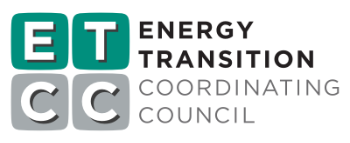Project Info
COMPLETE
Project Title
Next Generation Refrigeration Analysis Tool Proof of Concept
Project Number ET22SWE0025 Organization SWE (Statewide Electric ETP) End-use Process Loads Sector Commercial Project Year(s) 2022 - 2023Project Results
This study validates components of two low global warming potential (GWP) refrigeration system models using the OpenStudio and EnergyPlus software tools, improves modeling methodologies through the validation process, and applies lessons learned to an automated modeling workflow that can serve as the underlying framework for future software tools. In addition, the study sought stakeholder feedback regarding desired functionality for future software tools. The goal is to support future software for grocery refrigeration that is flexible, transparent, and can evolve with the industry and thereby enable grocery store transitions to lower carbon and more efficient refrigeration systems in both new and existing stores.
The model validation process discovered that evaporator load calculations were a primary area for model improvement. EnergyPlus, the underlying calculation engine for the OpenStudio software development kit (SDK)®, estimates load based on adjustments to rated sizing information entered by the user. This approach works when space conditions are close to the rated conditions but are not observed to accurately reflect the impacts of temperature and humidity of store spaces on evaporator loads. The project team identified methods to improve the approximation of the zone and refrigeration load relationship. Further development is necessary to mimic the extent of the relationship observed in the monitored stores. The validation work generally showed that individual components like compressors and condensers could be adequately represented with accurate knowledge of setpoints and controls. However, an accurate overall refrigeration system model requires detailed information about the refrigeration cases and their operation and subcomponents (e.g., lighting and defrost). Continued work is needed to understand the physical interactions between zone temperatures and humidity levels and evaporator loads, which can then lead to improved zone level modeling to approximate that relationship.
VEIC had previously developed automated workflows for grocery refrigeration analysis. A similar, simplified framework will be included in supplementary documentation as a component of this project. The modeling framework includes modeling improvements resulting from this study that incorporate better zone/case interactions and a proposed input framework that allows for quick high-level models that are fast but less accurate with big-picture questions but includes opportunities for added inputs that will lead to more specific and accurate models.
The stakeholder feedback survey primarily received responses from contractors that support new and retrofit low-GWP refrigeration systems. The most prominent feedback included:
Energy savings is difficult to model without more validation.
Modeling of Carbon Dioxide (CO2) systems is very important and there currently are not good modeling options.
More accessible compressor performance curves are needed.
Operational cost is one of the most important outputs so incorporating utility rates is essential.
The study results in following recommendations:
Further a more detailed study of the interactions between refrigeration cases and indoor store conditions.
Further a continuation of this study that focuses on Transcritical CO2 systems.
Advance the development of a comprehensive compressor library that is compatible with EnergyPlus inputs and includes active participation of vendors.
Begin the full software development process leveraging the modeling framework suggested in this report.
Project Report Document
Loading PDF Preview...
